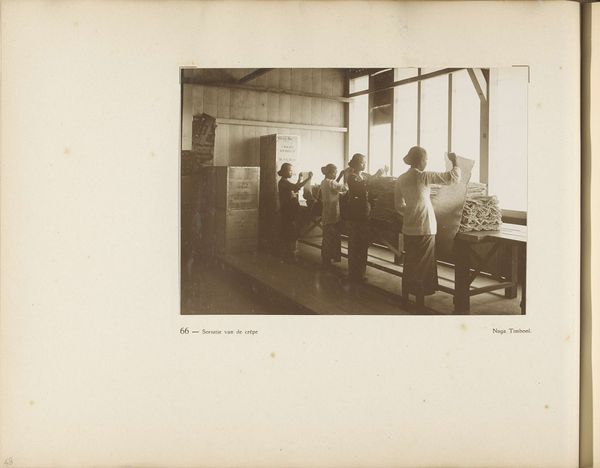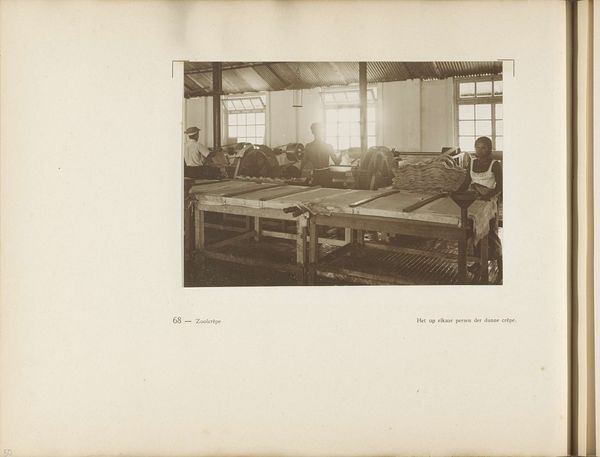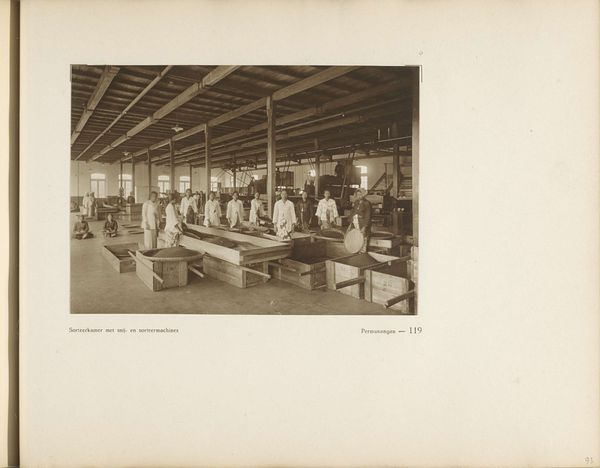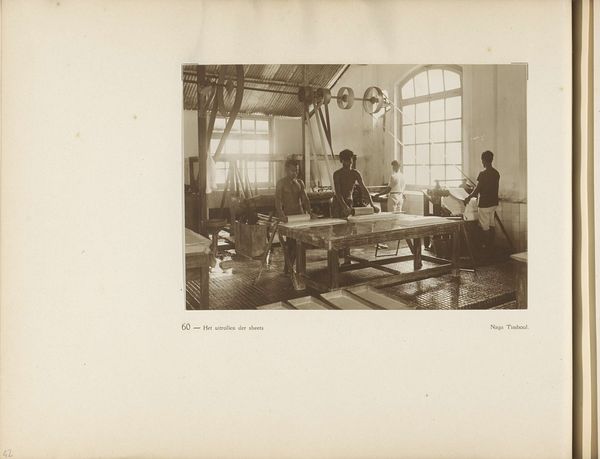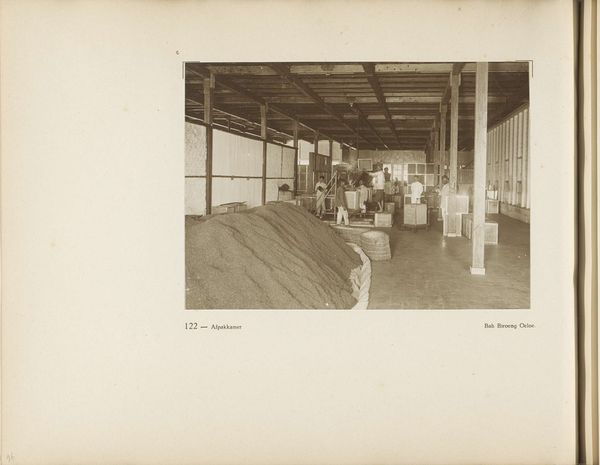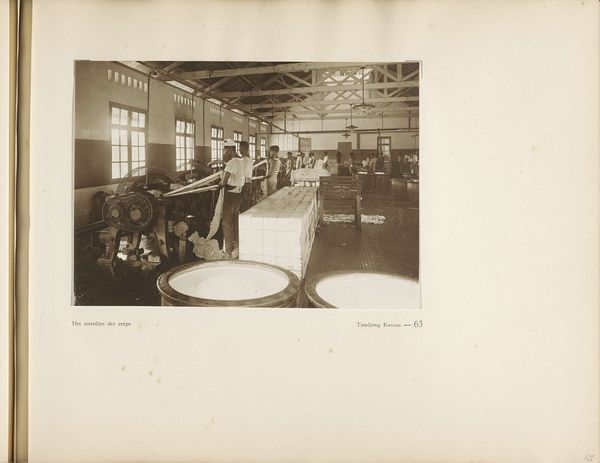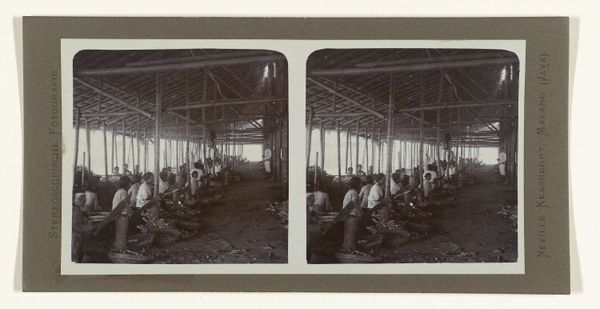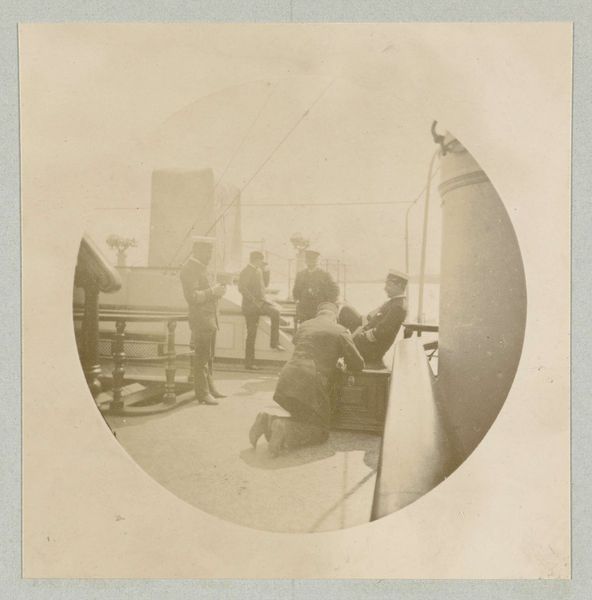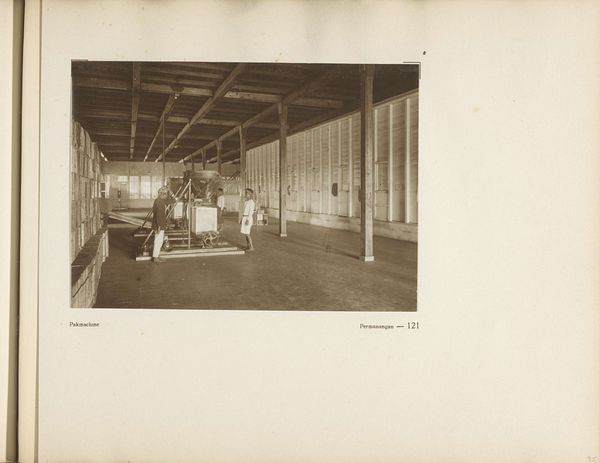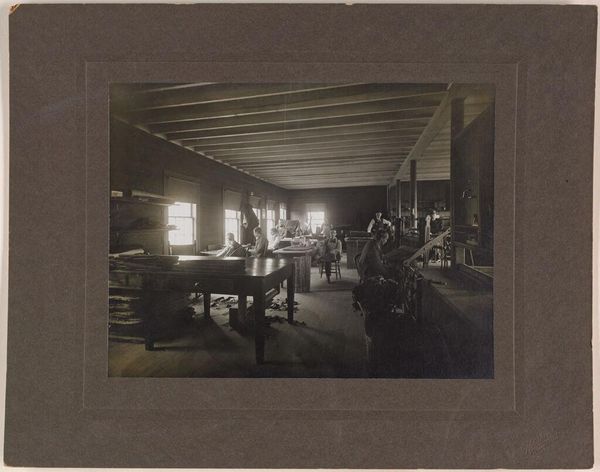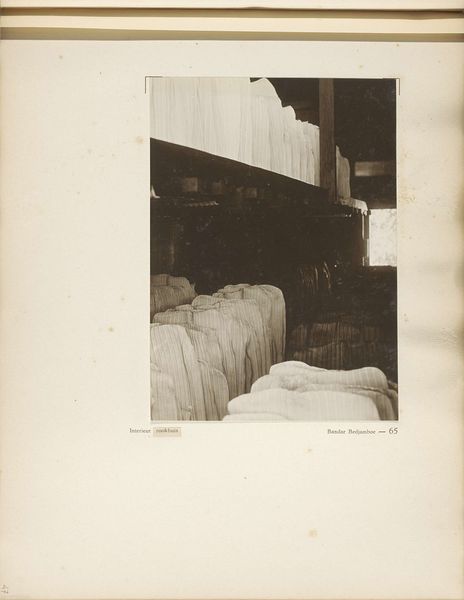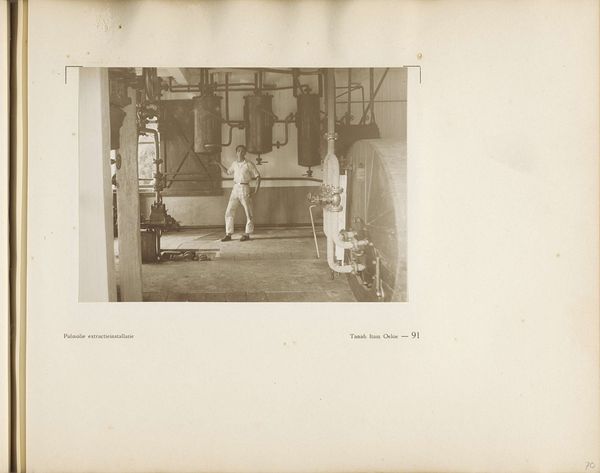
Pagina 67 van fotoboek van de Algemeene Vereeniging van Rubberplanters ter Oostkust van Sumatra (A.V.R.O.S.) c. 1924 - 1925
0:00
0:00
jwmeyster
Rijksmuseum
photography, gelatin-silver-print
#
landscape
#
photography
#
gelatin-silver-print
#
genre-painting
Dimensions: height 240 mm, width 310 mm
Copyright: Rijks Museum: Open Domain
Curator: Here we have, from around 1924-1925, page 67 from a photo album belonging to the General Association of Rubber Planters on the East Coast of Sumatra. The image, a gelatin silver print, is attributed to J.W. Meyster. What's your first take? Editor: Stark. The repeating lines of the building's structure and the women themselves create a visual rhythm, but the muted tones make it feel a bit melancholy. A document of labor, I suppose. Curator: Absolutely. Look at the composition: the light streaming through the windows throws focus on labor processes and the rubber sheets in an industry-led construction, not merely picturesque or aestheticizing interests. Editor: And who labors in this frame, framed within this imperial construction? Predominantly women, seen here laying out sheets. Considering it comes from an association of planters, it’s an incredibly biased representation, isn’t it? We're seeing colonialism and its industry through its own manufactured lens. Curator: The materiality also hints at this inherent tension. Gelatin silver printing allowed for mass reproduction and distribution, cementing the association's visual narrative of its success. The sheer volume and flatness in printing would reinforce notions of scale, scope and standardization; a controlled operation through material manipulation. Editor: Exactly! This photo isn’t just about processing rubber, but processing and distributing power dynamics. The images normalize labor exploitation by focusing solely on a singular aspect of production; we could extend our thinking further by examining archival evidence about who the women were, how they were recruited and so on. Curator: The lack of individual portraiture strips these laborers of any unique identity too, replacing it with the uniformity that aligns to productivity benchmarks instead. They are parts within this rubber-producing machine. Editor: So it’s a landscape—not of rolling hills, but a social and economic one that reveals the hierarchies in place, all too still now. Curator: Indeed, through technique, context, labor dynamics, we can consider production and reproduction both for labor and representation! Editor: Well said, and essential for anyone seeking an honest appraisal.
Comments
No comments
Be the first to comment and join the conversation on the ultimate creative platform.
